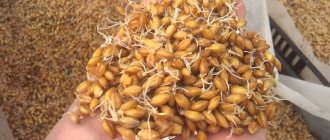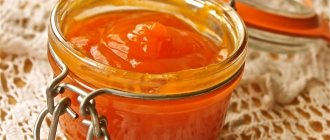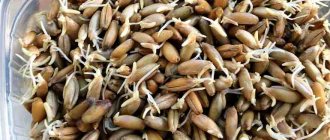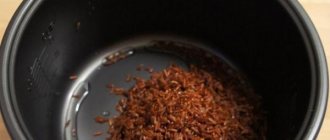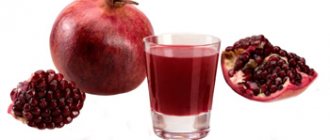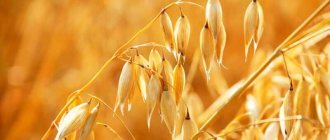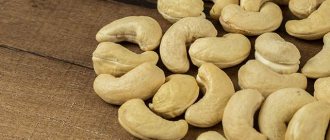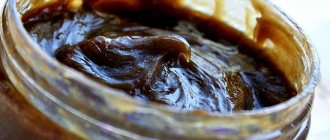Features of the biochemical composition of sprouted barley grain
During the process of germination in barley grain, the activity of enzymes is activated, promoting the breakdown of nutrients (proteins, fats, carbohydrates) into organic components that are simpler in structure and easily digestible by the human body (proteins are converted into amino acids, fats into fatty acids, starch into protozoa saccharides).
Thus, when eating sprouted barley grain or barley malt for therapeutic and prophylactic purposes, the human body spends significantly less energy on the absorption of nutrients than when consuming traditional food products made from unsprouted barley grain (barley and pearl barley, barley bread) .
A characteristic feature of sprouted barley grain is also its higher content (compared to ripe, unsprouted barley grain) of vitamin E and B vitamins.
Sprouted barley in some cases causes increased gas formation, and therefore its consumption is not recommended for people suffering from flatulence, and is also contraindicated for diseases of the gastrointestinal tract in the acute stage. In addition, you should not eat sprouted barley grains at night.
During treatment with barley decoctions, you should refrain from eating egg whites. Barley water should not be consumed with honey or vinegar.
For severe cough, diarrhea, colitis, gastritis, stomach and duodenal ulcers and other inflammatory diseases of the gastrointestinal tract: Take 100 g of barley grain, pour 1 liter of boiled water at room temperature, leave for 5-6 hours, then cook for 15-18 minutes and let it brew for 30-40 minutes. Then strain the barley broth and drink a quarter glass 3-4 times a day before meals.
For chronic constipation: finely chop 4 small pears, mix with 150 g of barley grains, add 1.5 liters of water and cook over low heat for 20 minutes. Then cool, strain and take 1 quarter glass 10 minutes before meals 3 times a day.
For bronchitis, pneumonia and tuberculosis, accompanied by a severe cough: 2 tbsp. mix spoons of raisins with 2 tbsp. spoons of barley grain or oats and add 1.5 liters of water. Then cook, covered, over low heat until half the liquid has evaporated. You can add 1 tbsp to the prepared barley broth. a spoonful of honey.
For a severe cough, a decoction can also help, which can be prepared as follows: mix equal amounts of barley, rye and oats, grind in a coffee grinder, add a little chicory and almonds and brew with boiling water. Drink 3-4 times a day; before drinking, you can add baked milk to the barley broth.
As a general tonic for patients who have undergone surgery on the abdominal organs, you can use barley decoction prepared according to the following recipe: 40 g of barley grains crushed in a coffee grinder, pour 450 ml of hot water, leave for 4-4.5 hours, and then boil for 12- 15 minutes on low heat. Then cool, filter and take 3 tbsp. spoon before meals 3 times a day.
For diathesis, it is useful to take baths with the addition of barley decoction, which can be prepared as follows: mix 25 g of oak bark and 400 g of barley grains, grind, then pour in 8 liters of water and cook over low heat for 30 minutes. Then leave for 1 hour, strain and add to the bath.
Barley decoction to enhance lactation: pour 300 g of barley grains into 3 liters of water and cook over low heat for 2 hours (in this case, it will be very useful to cook oat grains together with fennel seeds). Then cool the resulting broth, strain and take a third of a glass 3 times a day.
To relieve muscle tension, draw pus from an abscess or draw out poison from a bite site, a barley compress will help, which can be prepared as follows: grind the barley grains in a coffee grinder, then mix them with hot water until a homogeneous paste is obtained. Wrap the resulting mass in cotton cloth or a towel and apply it as a hot or cold compress.
For bottle-fed infants, barley broth will be especially useful, which is prepared as follows: 1 teaspoon of barley grains crushed in a coffee grinder, pour 1 glass of boiling water, and cook over low heat until the barley mass is boiled. Then the resulting broth is cooled, filtered and used as an additive to whole cow's milk or formula prepared for feeding.
Barley jelly
Jelly made from sprouted barley grains is very useful for people with diabetes, stomach and duodenal ulcers.
Barley grains need to be sprouted and dried; the finished grains are ground in a meat grinder or coffee grinder. Add a little cold water, add boiling water and boil for a couple more minutes. Leave the resulting suspension for twenty minutes and express. You need to take this jelly freshly prepared for half a month.
For anemia and radiation exposure, the following remedy should be used: 1 tbsp. Pour a spoonful of barley malt into 1 glass of water and leave for 1 hour in a warm place. Then boil over low heat for 10 minutes. Cool and take 0.5 cups 3 times a day before meals.
With elevated blood sugar levels, hemorrhoids, tuberculosis, bronchitis, pneumonia, sore throat, cough, this infusion will bring relief: 2 tbsp. spoons of crushed barley malt, pour 250 ml of boiling water, leave for 4 hours. Then cool and drink 0.5 cups 4-5 times a day. You can add a little honey to this barley infusion. The same remedy will be very effective for vitamin deficiency, anemia, and loss of strength.
For diseases of the kidneys, bladder, urinary tract, scrofula, as well as disorders of the nervous system, traditional medicine recommends this infusion: 4.5 tbsp. spoons of barley malt, pour 1.5 liters of boiling water, leave for 20 minutes. Then cool and drink 0.5 cups 5 times a day.
Jelly made from sprouted barley grains will be especially useful for people suffering from diabetes, obesity, gastritis, stomach and duodenal ulcers. You can prepare this jelly as follows: sprouted barley grains should be crushed in a coffee grinder or meat grinder. Then you need to add a little cool boiled water to the resulting mass, mix everything, pour boiling water over it, boil for 2-3 minutes, and strain through cheesecloth. The course of treatment with this drug is 15 days. Barley jelly should be consumed only in freshly prepared form.
During the winter-spring period of vitamin deficiency, it is useful for adults and children to drink barley water. It’s not difficult to prepare: 300 g of sprouted barley grains need to be poured into 1 liter of water and brought to a boil under a closed lid over low heat. Then let it brew for 30 minutes, strain and cool. It is recommended to drink 1 glass of this barley water every day. To improve the taste, you can add fruit juices or syrups to this product.
Compresses made from barley malt are a popular remedy in folk medicine for the treatment of inflammatory skin diseases, mastitis, breastfeeding, and benign tumors.
A therapeutic malt bath has an anti-inflammatory and soothing effect on various skin diseases, the infusion for which can be prepared as follows: 1.5 kg of crushed barley malt is poured into 3 liters of boiling water, left for 30-45 minutes, filtered and poured into the bath. To prepare a baby bath, 500 g of barley malt is enough.
Malt masks are also useful for inflammatory processes on the skin. To prepare such a nourishing, anti-inflammatory mask, 3 tbsp is enough. spoons of crushed barley malt, pour 1 liter of hot water and leave for 30 minutes.
Recipe from Zealand
Live oatmeal jelly
Unhulled oat grain (in shell) 800 g (or 400 g oats and 400 g barley, also unhulled) Wheat grain 200 g Caraway seeds 1 tablespoon Dill seeds 1 tbsp. spoon Seasoning for Korean carrots 1 tbsp. spoon Ground cayenne pepper (chili) 1/2 teaspoon Drinking water 3.5 l
Pour the oats into a colander and rinse with running water. Then pour shungite water in a large saucepan overnight. In the morning, transfer to a colander and cover with wet gauze in two layers. In the evening, rinse with running water without removing the gauze. The same evening, soak the wheat in a pot. The next morning, rinse the oats again. Proceed with wheat in the same way as in the previous recipe.
In the evening, rinse the oats again. The next morning, rinse the oats and wheat, the sprouts are ready. Thus, it takes two days for oats to germinate—twice as long as wheat. The size of oat sprouts should not exceed 1-1.5 cm. Oats and barley usually sprout unevenly, but this should not bother you; all the necessary transformations in the grain will ripen. The main thing is to soak them overnight for at least 12 hours. If barley grains do not hatch at all, it is better to germinate only oats.
Now, load the sprouts in small portions into a blender, adding water, and grind to a fine fraction, starting at low speed and ending with the highest speed, but not for too long, so as not to overheat the device. In total, this should take 2.5 liters of water. Do not overload the blender, otherwise it will not cope. It is best to buy the most powerful blender, over 1 kW.
I cannot guarantee that any meat grinder will cope with unhulled grain. The designs of imported meat grinders are imperfect, since manufacturers usually believe that they will not grind anything other than meat. The designs of domestic meat grinders are more adequate in this sense. But I haven’t seen any high-power electric ones made by us, but if you grind by hand, you need good physical training.
Types and varieties
Agronomists divide barley into the following types :
- Spring - used to produce barley and pearl barley, flour and coffee substitute. This type of grain is considered an early crop, so it is sown at certain times so as not to lose an impressive part of the harvest. Spring cereal is resistant to pests.
- Winter wheat is drought-resistant, has a short growing season: it ripens 10–12 days earlier than winter wheat. The crop has good feeding qualities and produces a high grain yield. This barley is used to make flour and cereals, but the bulk of the grown grain is used for feed purposes. The disadvantage of the winter variety of cereal is the lack of resistance to cold: the plant dies at temperatures below -12°C.
Popular varieties
The most popular varieties are:
- Priazovsky - has a semi-erect bush and a cylindrical, medium-loose ear. Mid-season: the growing season is 71–87 days. The variety is resistant to drought and various pests. Has high nutritional value. Distributed throughout Russia.
- Helios are erect bushes, reaching a height of 70–80 cm. The variety has high drought resistance and stable yields in different latitudinal zones. An average of 8,000 kg of cereals are harvested from 1 hectare of planted seeds. Recommended for cultivation in the Central Black Earth region.
- Mamluk - has a cylindrical long spike of straw-yellow color, elongated serrated awns. The variety was bred in the Krasnodar region by crossing Triumph and Temp. Early ripening barley: ripens in 65–85 days. Included in the list of valuable varieties, it has high yields and tolerates drought well.
- Duncan - developed using nanotechnology in Canada in 2012. It is used both for the production of cereals and for livestock feed. The height of the barley is 100 cm, it has 14 stems. The number of grains in an ear is more than 250 pieces. Canadian barley is sown for 10 years in a row, and it does not lose its beneficial properties. The plant tolerates drought well, withstanding +60°C, and is resistant to fungal diseases, acid rain and soil salinity. Duncan does not tolerate being around weeds.
- Vakula (photo on the right) are semi-erect bushes, reaching a length of 70–80 cm. The culture easily adapts to different types of soil and gives good germination. The average yield for the Central Black Earth region is 33.7 c/ha. The growing season is 69–85 days. Grains accumulate up to 13% protein. The variety is used mainly in brewing production and for feeding livestock.
- Ark - winter barley. The bushes are semi-erect, the ears are short and cylindrical. The variety ripens within 275 days. Productivity - 64 c/ha. Resistant to shedding and lodging, moderately susceptible to drought. The grains contain 13.3% protein. Recommended for the North Caucasus region.
- Selena Star - has semi-spreading bushes and semi-erect cylindrical ears. Reaches 1 m in height. The variety is resistant to many diseases and pests and is not susceptible to shedding. The ripening period is 285 days.
- Borisfen - bushes of medium height (94–100 cm), ears with a slight waxy coating or without it. Productivity - 75 c/ha. The grains are rich in protein. The variety has strong immunity to diseases. The cereal ripens in 288 days.
Take note:
How to make malt from barley
Barley moonshine recipes
How to germinate barley and why it is needed
The benefits of barley for men
Sprouted barley grains, if introduced into the diet on an ongoing basis, have a beneficial effect on the female reproductive system. Indications include breast diseases, as well as thrush, inflammatory processes in the ovaries, fibroids and endometriosis.
Nursing mothers with a lack of breast milk are recommended to include barley dishes, infusions and decoctions in their diet. The cereal contains lignans - phenolic compounds that prevent the development of hormone-dependent breast cancer.
In cosmetology, barley is used as a source of vitamin E. It protects cells from lack of oxygen and activates the production of collagen, which is so important for the beauty of skin, hair and nails.
Baths with the addition of barley decoction nourish the epidermis, relieve inflammation, reduce wrinkles, restore elasticity and smoothness. Regular procedures help in the fight against age-related changes.
Due to its anti-inflammatory properties, cereal is used in the treatment of prostatitis and prostate adenoma. Barley is indicated for people who are actively involved in sports and maintain physical fitness. Eating a variety of grains, malts and flours increases stamina and provides energy.
Building muscle mass and faster reactions are the result of the constant presence of barley in the menu. Phosphorus and B vitamins even in adulthood help a man stay strong and lead a full life.
The benefits of drinking a decoction made from barley grains
A decoction made from barley can help treat:
- inflammatory processes of the kidneys, urinary tract;
- abnormalities in the functioning of the respiratory system, such as bronchial asthma;
- metabolic disorders (diabetes);
- gastrointestinal dysfunction (constipation, dysbacteriosis, etc.);
- skin pathologies of various nature: allergic (diathesis, eczema), inflammatory (acne, etc.), infectious (erysipelas, etc.);
- diseases of the cardiovascular system, including atherosclerosis, varicose veins.
We advise you to read: Burdock decoction
A decoction of barley grains, thanks to its high concentration of minerals, helps preserve youth, slows down the aging process, and prevents the appearance of wrinkles ahead of time. Normalizes metabolic processes in the skin, bone tissue, stimulates the synthesis of connective tissue fibers. Regular consumption of the drink makes the skin elastic and firm.
Tips for germinating barley
Rinse the barley grain with cool boiled water, then soak in water for 24-36 hours. The water for soaking grain must be changed every 7 hours. At the end of the soaking process, moistened barley grains should be placed between two layers of gauze or cotton cloth well soaked in warm water, placed on the bottom of a glass or enamel bowl (the grain layer should not exceed 2-3 cm).
Then cover the dishes with a lid and put them in a dark place with a temperature of 18-20 degrees. During the germination process, the top layer of fabric covering the barley grains must be periodically moistened (as it dries), and the grains themselves must be ventilated once a day, opening the lid and the top layer of fabric for 15-20 minutes.
- The length of barley sprouts should not be more than 3 mm (it is in sprouts 1-3 mm long that the concentration of biologically active substances and vitamins is highest).
- Sprouted barley grains can be stored in the refrigerator for no more than 24 hours.
Recommendations for older people
Thanks to its balanced composition, barley grain strengthens bones well. This is very important in adulthood, when they become fragile and the cartilage tissue in the joints wears out. Decoctions of barley are recommended to be used externally as a lotion on joints and internally to improve mobility.
Sprouted barley restores the strength of weakened and seriously ill people. It is completely absorbed and does not burden the gastrointestinal tract. Low calorie content helps control weight. Barley grain contains magnesium and potassium, necessary for the heart muscle, as well as silicon, chromium and manganese, which strengthen the walls of blood vessels.
Description and characteristics of cereal
Barley is one of the oldest grains cultivated by mankind . Traces of its wild grains were found in excavations of settlements dating back more than 17 thousand years. About 10 thousand years ago, barley was cultivated and began to be purposefully sown.
In Ancient Egypt, barley was used as currency. It is known that workers on the construction of the pyramids were given grain or barley bread and beer as payment. The Bible mentions that the ancient Jews sacrificed barley grains to God. This grain was one of the seven fruits of the Promised Land.
In ancient Rome, gladiators were fed barley: it was believed that the porridge made from it would make muscles grow faster and the fighters themselves would become stronger. In Rus', barley has also been known for a long time: thanks to its unpretentiousness, it was grown where wheat or rye did not ripen.
Common barley itself is an annual herbaceous plant of the Barley genus of the Cereals family. Its stems are straight, bare, 30-60 cm high in wild barley, up to 90 cm in cultivated varieties. The leaves are about 30 cm long, straight, smooth and even.
The ears are hexagonal with a long (up to 10 cm) spine and consist of several spikelets grouped in groups of three. By July-August, grains ripen in them, which are used by humans.
Initially, only spring barley varieties were cultivated . By its origin, this plant is from the south, where during the long and warm summer it manages to reach full maturity. However, 2 thousand years after the start of cultivation, experiments began on autumn sowing.
Currently, winter barley accounts for about 10% of the total volume. In some countries (for example, Romania and Bulgaria), spring crops are practically not grown, switching completely to winter sowing.
Barley in children's diet
Barley porridge is an excellent source of energy for a growing body. Natural immunostimulants protect against infections and influenza viruses. Easily digestible fiber normalizes digestion and prevents allergies.
Barley infusions and lotions with them help mothers treat childhood diathesis, dermatitis, and urticaria. It alleviates the condition of such serious diseases as fungus and psoriasis. Herpes can also be treated faster if you take baths with barley decoction. For childhood asthma, barley dishes are included in the menu as an additional source of vitamins and minerals.
Medicinal recipes for infusions and decoctions based on barley malt
Malt is a sprouted grain that can be prepared from barley, rye and wheat. Sort the grain, throw away garbage, impurities, damaged and underdeveloped grains. If possible, the grain should be approximately the same size. Barley grain is soaked for 2-2.5 days in a glass or enamel container. During the entire soaking process, it is necessary to change the water every 8-9 hours, periodically leaving the barley grains without water for 2 - 2.5 hours (this is necessary to activate the biochemical processes in the barley grain).
When the soaking process is completed, the germination of barley begins, which lasts 6-7 days. During the germination process, the grain must be periodically moistened and carefully mixed. On day 2-3, sprouts begin to appear. On the 6-7th day of germination, their length reaches 1.5 times the length of a barley grain.
ANOTHER RECIPE
Malt can be prepared for future use. Place the grain in a bucket, large saucepan, or, if available, in a barrel and fill with water. It should be kept in water until the top cover begins to fall off. The water should be changed twice a day; the grain should be filled with water at room temperature.
Swelling lasts 3–5 days. Spread the finished grain in a layer no thicker than 12-15 cm onto wooden boxes with low sides and keep in a dark room. Every 5 hours it must be stirred, preferably with a wooden spatula. The temperature inside the milk should not exceed 15-17°. When the first shoots appear, the thickness of the layer can be increased to 25 cm. The temperature inside such a layer should not be higher than 20-25°. Malt should be selected and dried when the sprouts reach a length of one and a half grains.
Well-dried malt should have a pleasant sweetish taste with a slightly hoppy aftertaste, float on the surface of the water, have a white-green color and crumble when bitten, like a dry bread crust.
Recipe from Zealand
The next step is to squeeze out all the prepared mass. To do this, you will need to somehow adapt a fine metal sieve to the pan. The most convenient option is a simple double boiler, consisting of a saucepan and a tray with a grate. A sieve (choose according to size) is placed on this tray, the jelly mass is poured into it and first rubbed a little with a wooden spatula, and then squeezed out with your hands.
The result will be 4 liters of jelly with the consistency of good cream. You can pour it into two-liter plastic bottles and put it in the refrigerator. Store for no more than two weeks. In the refrigerator, on the third day, the jelly slightly sours and acquires a pleasant taste, with sourness. Shake the bottle well before use.
Fermenting jelly at room temperature, as is done in the classic recipe, is completely unnecessary. An excess of bacteria of any one type in a product is undesirable, since it inhibits the symbiotic intestinal microflora and causes an imbalance.
Unlike the old Russian recipe for jelly, restored by Dr. Izotov, live jelly prepared using this technology is many times richer in its composition, concentration of nutrients and healing properties. Of course, you can boil it, as our ancestors did, then it will really turn into thick jelly, which is just right to cut with a knife.
If you consider that even boiled oatmeal jelly cures many different diseases and normalizes many functions of the body, then you can imagine what power living jelly has. In fact, it is the ideal food for the body, after mother's milk. The ORP alone is worth it - he has it as much as -800! And this indicator does not decrease as quickly as that of living water, but remains for a long time.
Live jelly is a biologically active product, so you should take it carefully at first, gradually accustoming your body, and not mix it with other foods. If it causes indigestion, it means the intestines are very clogged. What to do? Cleanse the intestines, what else. Or continue to eat dead food and forget about living food. Then everything will be as before, “okay.”
Live jelly is ideal for baby food. But again, you should give it a little at first, accustoming it gradually. Of course, if you have already fed your child formula milk and boiled cereals, his body may not immediately accept the biologically active product, or even refuse it altogether.
I must warn you: do not experiment on children if you yourself have not yet really figured out your diet! If a mother decides to make her child a raw foodist, she must live on a pure raw food diet for at least a year before conception. Only under this condition can you safely feed a weaned baby exclusively with live food. If this condition has not been met, live food must be introduced into the child’s diet carefully, gradually replacing the proportion of dead food with live food.
And now, actually, the recipe for oatmeal jelly. For one serving, take 200-300 grams of the product, add three tablespoons of wheat bran, a tablespoon of milk thistle powder, a dessert or tablespoon of milk thistle oil (sold in pharmacies) and the juice of one quarter of a lemon (or one or two tablespoons of natural apple vinegar), and mix it all.
There is no need to add anything else. If you eat a bite with garlic and pepper, then this dish is a magnificent healing and rejuvenating balm for the body, and death for parasites. I can't promise that you will like this food right away. But then, when the body tastes what kind of miracle this is and gets used to it, you won’t be able to pull it by the ears - I guarantee it.
In general, living food has such an effect on the body that when it discovers something useful for itself, it no longer wants to return to something harmful. The old habit of eating something like that will not give rest for a long time. But experience will show that nothing good comes out of this - just heaviness in the stomach and sheer disappointment.
Sources
Beneficial properties of barley groats
ANOTHER RECIPE
Barley jelly
Recipe from Zealand
Sources
Barley is a medicinal plant. Proper use of traditional medicine recipes and a properly formulated diet help in solving many health problems. Let's look at the benefits and harms of barley.
Weight loss
Chem. The composition of the cereal is rich in substances beneficial to health. The amino acid lysine stimulates collagen production, fiber reduces appetite and restores digestion.
Vegetable protein maintains energy balance and is easily and completely absorbed by the body. The calorie content of pearl barley is low. Barley decoction normalizes blood sugar levels and reduces bad cholesterol.
Barley is rich in plant fiber. This is an important source of dietary fiber, which promotes quick satiety and prevents overeating. Fiber is also needed to maintain intestinal microflora.
The synthesis of necessary substances and the digestion of food are improved, which has a positive effect on intestinal function, preventing constipation and diarrhea. Barley is used in the treatment of ulcerative inflammation and restoration of the intestinal mucosa.
Barley contains natural antioxidants and is therefore beneficial for the prevention of colon cancer. These substances support and strengthen the immune system, helping to successfully cope with atypical cells.
The plant fiber contained in barley normalizes the functioning of the gastrointestinal tract, removes waste and toxins, and prevents constipation - one of the main causes of colon cancer.
Arthritis and arthrosis
Barley contains the entire spectrum of B vitamins, calcium, selenium, copper, manganese and phosphorus. These nutrients are needed to maintain overall health, especially for strong bones and joints.
Calcium is the main mineral of bone tissue. Copper is involved in the synthesis of collagen, the lack of which weakens the skeleton. Barley helps avoid fragility and brittleness of bones, improves regeneration processes in the body.
To maintain joint health, barley malt infusion is used, both externally and internally. Soothing baths with barley decoction speed up healing and relieve joint pain.
The beneficial properties of barley are also very useful for people who take care of their appearance. Masks made from barley flour cleanse problematic skin, have a calming effect, relieve inflammation and irritation.
Barley extract, used in cosmetology, moisturizes and refreshes the skin. Natural collagen contained in cereals protects it from fading. It becomes denser and receives protection from ultraviolet rays.
Endocrine system
Barley is also useful for preventing type 2 diabetes. The beneficial properties of the culture will balance nutrition and maintain stable body weight. A competent menu helps to completely eliminate the risk of diabetes.
But if the disease has already been diagnosed, fiber in combination with beta-glucan reduces blood glucose and insulin levels. A therapeutic diet selected by a specialist will make life easier even for a seriously ill person.
Decoctions and infusions of barley grain are well suited to relieve inflammation in the respiratory system. A dry cough and sore throat can be effectively treated with a decoction of barley mixed with hot milk. As an additional therapy, barley infusions are used for bronchitis, tuberculosis and pneumonia. They have a general strengthening effect and support the immune system.
Barley infusion is also used as an external remedy. Sulfur and silicon in combination with B vitamins have an anti-inflammatory effect. Barley decoctions and infusions promote faster healing of wounds.
Contraindications
Possible harm of barley product:
- Individual intolerance to cereals. If an allergic reaction occurs (sneezing, watery eyes, itching, rash), the product is excluded from the diet.
- Excessive consumption of barley coffee is contraindicated for children and the elderly.
- If you have stomach pathologies or high acidity, drinking a hot drink is prohibited. Chilled limit to 1 cup per day.
- For flatulence , chronic gastritis and ulcers, coffee made from barley grains is contraindicated.
It is important to follow the rules for selecting raw materials and storing dry powder:
- for cooking, use only a high-quality product - whole, clean, white grains;
- Shelf life of barley flour is 9-10 months;
- store the powder in an airtight container, away from direct rays, hot air flows, and moisture.
